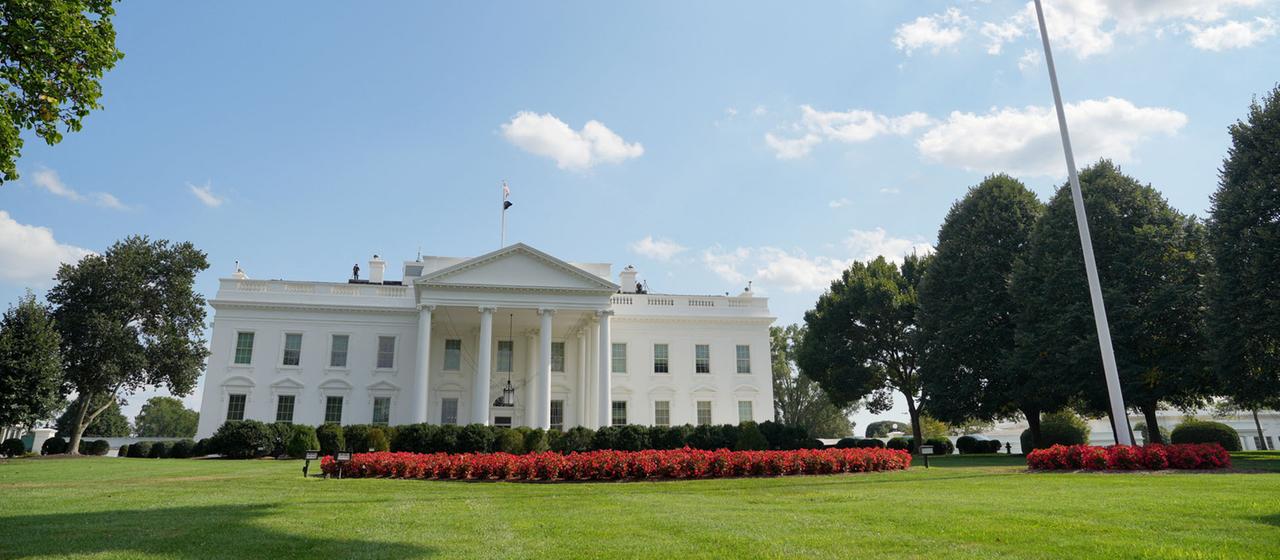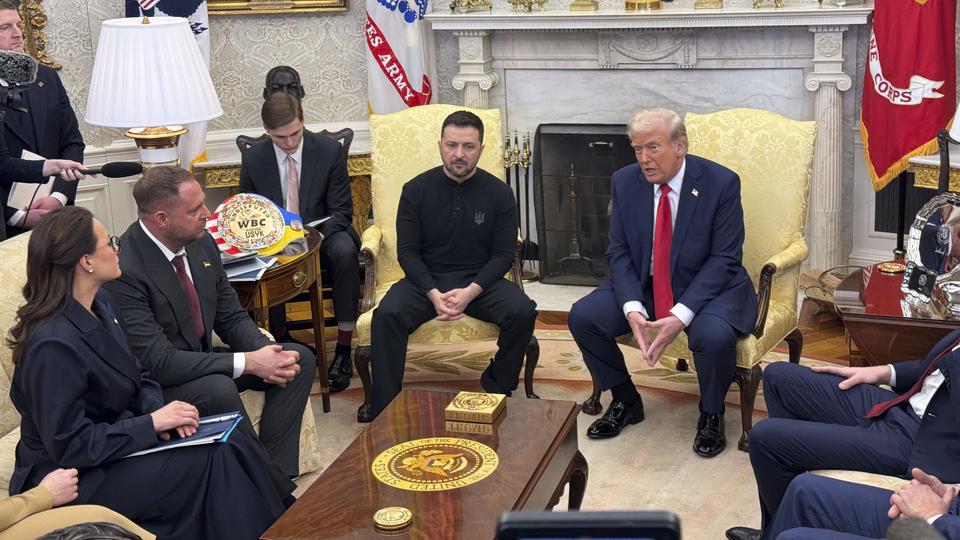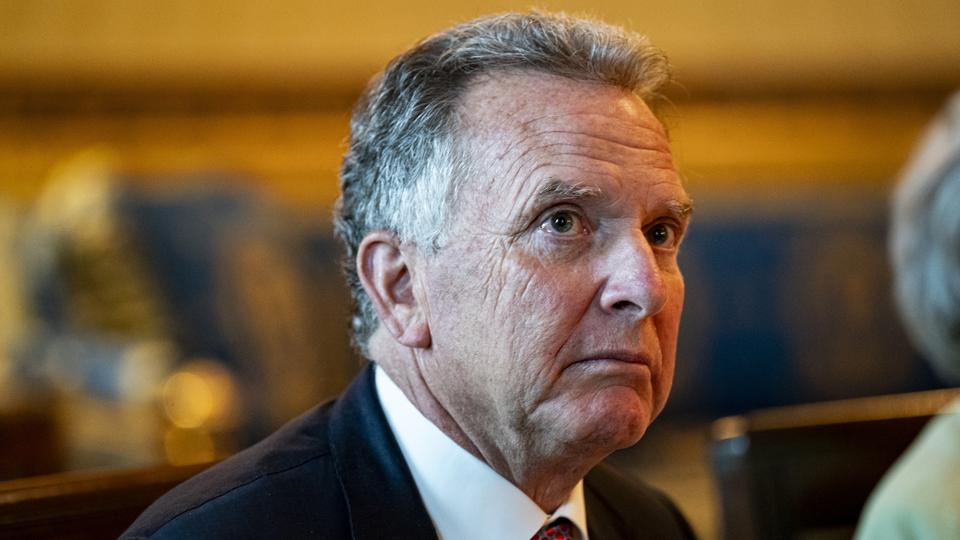
FAQ
US President Trump will meet with Ukrainian President Zelensky and numerous European politicians this evening. The meeting will focus on a possible peace in Ukraine. What will be discussed? How will the meeting proceed?
What exactly is planned?
A series of talks on the war in Ukraine is taking place at the White House today. They begin at 6 p.m. German time. Leading European politicians are expected to arrive then. German Chancellor Friedrich Merz (CDU), French President Emmanuel Macron, British Prime Minister Keir Starmer, Italian Prime Minister Giorgia Meloni, Finnish President Alexander Stubb, EU Commission President Ursula von der Leyen, and NATO Secretary General Mark Rutte are expected to attend.
At 7 p.m., Donald Trump will greet Ukrainian President Volodymyr Zelensky. A bilateral meeting between the two is scheduled for 7:15 p.m. This will be Zelensky's first time in the Oval Office since the February scandal, when Trump and Vice President J.D. Vance rebuked the Ukrainian president in front of a large crowd.

The White House schedule calls for Trump to greet the other European leaders at 8:15 p.m. Everyone will then appear together for photo and video sessions at 8:30 p.m. Joint talks are scheduled to begin at 9 p.m. How long this will last is unclear.
Why is the meeting taking place at the White House?
On Friday, Trump met with Russian President Vladimir Putin. Following this, there were telephone conversations with Zelensky and the European partners, in which Trump informed them of the results of the meeting with Putin. It is now clear: The US president has backed away from his previous demand, which was also shared by the Ukrainians and the Europeans, for a ceasefire as a condition for peace negotiations. There is also no longer any talk of sanctions against Russia, which Trump had previously repeatedly threatened.
Trump now shifted the responsibility for bringing about a ceasefire solely to Zelensky:"Ukrainian President Zelensky can end the war with Russia almost immediately if he wants, or he can keep fighting," Trump wrote on his Truth Social network.
Trump now wants to discuss a peace agreement immediately—in keeping with Putin's wishes—while the fighting continues. However, such negotiations can drag on. Many observers believe this is an important aspect for Russia, which has long considered itself to have a military advantage and may hope to conquer further territory during negotiations.
It remains unclear how Trump responded to Putin's demands that Ukraine cede the entire Donetsk region to Russia—which Russia has only captured two-thirds of. Military experts repeatedly point out that the unconquered parts of the region represent a well-fortified security perimeter for Ukraine. Their loss would be a massive military setback for the country and would significantly improve Russia's ability to attack Ukraine again in the future.
Trump further stated that the prospect of Ukraine joining NATO was also off the table. However, Trump's special envoy Steve Witkoff, who also participated in the talks with Putin, said in TV interviews over the weekend that the Russian side had agreed to security guarantees for Ukraine modeled on the NATO treaty – but at the same time had also demanded guarantees for itself.
All this raises many questions that Ukraine and the Europeans will surely pose to Trump today. The US administration is expected to explain its perspective on the latest developments and address the resulting questions at the meeting.
According to the German government, the topics discussed include"security guarantees, territorial issues, and continued support for Ukraine in its defense against Russian aggression."
What is meant by security guarantees?
In general, this refers to measures that protect a country from being attacked by another. Ukraine is demanding precisely such security guarantees for the post-war period. This is intended to prevent Russia from invading the country again in the future. Russia had strongly denied any such intention until February 22, 2022.
According to Ukrainians, Russia has been continuously attacking Ukraine since 2014, when it annexed Crimea in violation of international law and seized the Donbass region from Ukraine. Moscow has also failed to adhere to the agreements it subsequently reached with Kyiv and European mediators as part of the Minsk Process. Agreements were reached during negotiations in the Belarusian capital in 2014 and 2015 that were intended to end the conflict in eastern Ukraine.
If Ukraine had its way, it would join NATO. This would arguably provide the strongest security guarantee. Article 5 of the NATO Treaty states:
The Parties agree that an armed attack against one or more of them in Europe or North America shall be considered an attack against them all. Article 5, NATO Treaty
Ukraine would therefore receive assistance from all 32 other NATO states. Russia wants to prevent precisely that and is therefore against Ukraine's accession to the alliance.
What other security guarantees can there be?
That remains unclear for now. Witkoff told CNN:"We were able to secure the following concession: The US could offer Article 5-like protection." Witkoff added that "this was the first time we've heard the Russians agree to this." The special envoy did not elaborate on this on CNN.
He told Fox News that Russia had also agreed to pass a law prohibiting the seizure of further parts of Ukraine by force. They were prepared to"enshrine such language in law" or confirm that they "would not seek to take any more land from Ukraine following a peace agreement."
Here, too, it's relevant to note that Russia had contractually recognized Ukraine's borders—including Crimea's affiliation—until 2014. In 1994, Russia signed the Budapest Memorandum, in which Ukraine committed to surrendering the nuclear weapons still on its territory, a legacy of the Soviet Union. In return, it included security guarantees—including, among other things, the recognition of its territory.

Does Ukraine also have to give up land to Russia?
This scenario is on the table. There are two possible scenarios: land already occupied by Russia, and land still controlled by Ukraine. Kyiv categorically rejects both forms of territorial cession. Moscow, on the other hand, insists that Ukraine cede territory.
Russia, for one thing, demands that Ukraine legally recognize the Russian affiliation of Crimea, which it annexed in 2014. Furthermore, since 2022, it has included in its constitution the Luhansk, Zaporizhia, and Kherson regions—which it has also not completely conquered. In recent days, however, there have been indications that Russia's primary concern is the entire Donetsk region and that it might be willing to freeze the front lines in the Zaporizhia and Kherson regions. It has conquered about half of these regions. Luhansk is almost entirely under Russian control anyway.
Trump reportedly agrees to this option, concerning the Donetsk region, if it offers the possibility of a quick peace agreement. Ukraine has so far rejected this – primarily citing its constitution, which lists Crimea and the four aforementioned regions as part of its territory. A majority in the Ukrainian Rada for a constitutional amendment was previously considered impossible.
At the same time, however, Ukraine has also indicated that it is willing to make territorial concessions. However, this is first subject to a ceasefire. The starting point for such considerations must be the so-called contact line. Legal recognition of Russian occupations is not up for debate.
How can such a peace be secured?
A security guarantee could include, in addition to a threat that a renewed Russian attack on Ukraine would be interpreted as an attack on the assisting powers and retaliated by them, the presence of foreign soldiers in Ukraine. However, such an additional form of deterrence raises many practical and political questions.
The frontline between the warring parties is approximately 1,200 kilometers long. The most contested sections are heavily mined. Effective security would require a contingent of several tens of thousands of soldiers. French military scientist Guillaume Garnier estimated the number at at least 50,000 to 60,000 soldiers, who would also have to be rotated regularly. Military expert Stefanie Babst even speaks of several hundred thousand soldiers, citing the size of the Russian troops.
At the end of last year, Babst expressed doubt on tagesschau.de that the European NATO states would be capable of such a costly and complex operation.
German Foreign Minister Johann Wadephul (CDU) told the media portal table.media podcast that Germany would have to play an important role in securing peace. However, he opposed German soldiers in Ukraine. The Bundeswehr has already stationed a brigade in Lithuania. Stationing additional German soldiers in Ukraine"would likely overwhelm us," Wadephul said.
Other signals came from Great Britain in the spring. In February, British Prime Minister Keir Starmer wrote in a newspaper article that a country was ready to play a"leading role." This also meant "deploying our own troops on the ground." At the end of March, Starmer and French President Emmanuel Macron declared their readiness to send a British-French mission to Ukraine. Macron made it clear, however, that these would be a kind of"reinsurance force," meaning units that would not be stationed near the front lines after a ceasefire. Their task would then be to secure strategically important positions in the hinterland or to train Ukrainian military personnel, but not to safeguard the ceasefire.
Many details remain unclear on this issue as well. Russia, for its part, has repeatedly made it clear that it will not accept foreign soldiers in Ukraine.

